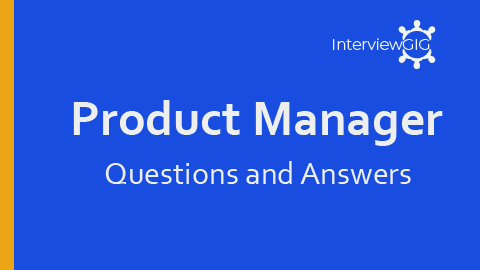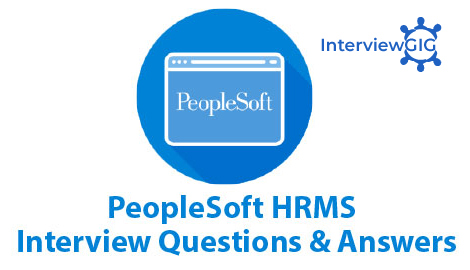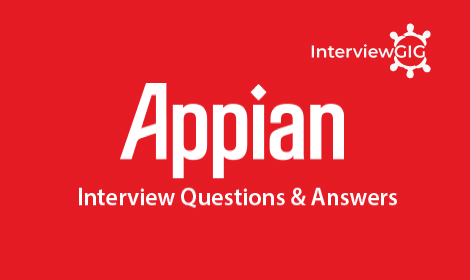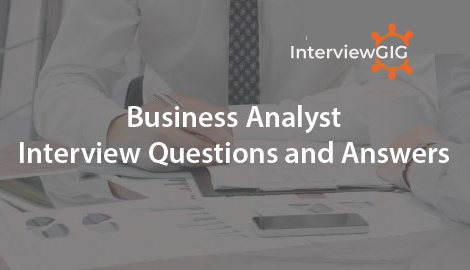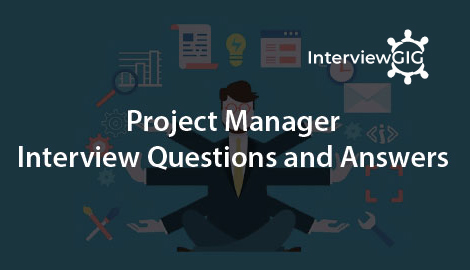What is workday?
Workday is a popular Software-as-a-Service (SaaS) enterprise-class solutions designed to manage global businesses. Workday is a web-based ERP software vendor that specializes in human capital management and financial management applications. Workday provides management with a way to oversee employee data, time tracking, procurement, expense management and financial accounting. The company has been applauded for the way it’s put an emphasis on usability, providing customers with integrated modules for human resource and business management
(Or)
Workday is an enterprise business service software application that integrates human resources, payroll, finance, and purchasing. It delivers these applications in a cloud model that allows people to work collaboratively in a real-time environment that is accessible to every member of Madison College. PeopleSoft Student will not be impacted by this change.
What are the different modules present in Workday?
Workday HCM (Workday Human Capital Management)
Workday Financial
What types of reports will Workday provide?
HCM, payroll, and financials in Workday will have standard and custom reports according to its primary business focus. Some reports combine information from both the HCM/Payroll and the Financials modules. Reports can have features such as custom prompts, calculated fields, and interactivity, as well as graphics and charts. Data in certain types of reports can also be made available to other applications.
What are some of the benefits of Workday?
- Enables 24/7 access to information over a secure network (which supports the UW’s goal to become an increasingly global campus).
- Provides easy-to-use access for routine personnel items (e.g., earning statements and leave balances) and to make personal information updates (e.g., contact information, direct deposits selections, and W-2 withholdings).
- Gives executives, managers, and administrators’ ready access to current information about their teams (e.g., current job descriptions).
- Simplifies and automates entry of academic personnel to ensure correct track and rank are entered into the system.
- Eliminates the need to build and maintain side and departmental shadow systems.
- Continually introduces new HR and payroll features and capabilities through Workday’s twice-yearly upgrades.
- Works on PCs and Macs.
Has been successfully implemented, or is being implemented, in other higher educational institutions such as Cornell University, California College of the Arts, Brown University, Carnegie Mellon University, Penn State, Yale University and the University of Rochester.Workday can unify finance and HR, giving you real-time insights, global visibility, and predictive analytics. Built for the cloud, Workday has its customers at the heart of all of its business decisions. Established by founders with a credible proven track record, Workday considers the role of its customers in the development of its solutions. A single version of this tool is available to meet the needs of all diverse companies, as Workday also integrates with a large number of business systems and applications.
What sources of information will be used for reporting in the future?
In addition to becoming the official source of business information for HCM, payroll, and financials, Workday will also become the main source for your reporting needs whenever possible. Reporting from the Institutional Data Store (IDS) using Cognos or other tools will supplement Workday reporting capabilities and will be used whenever data that do not exist in Workday are needed.
Will the ASMP team re-create all of my reports for me?
No, many of the reports you use may already be available in Workday, so there should be no need to re-create all of the reports you use today. Also, some reports you currently use may become obsolete if Workday can provide the information you need in a different way.
What does “ERP” mean and how does it relate to Workday?
“ERP” is an acronym for “Enterprise Resource Planning” and is a generic industry term for integrated suites of business systems (such as payroll, HR, and finance systems).
Workday became ERP for human resources, academic, and payroll business processes as of July 2015.
What kind of reporting will be available?
Workday will provide access to real-time, multi-dimensional reports and analytics with the ability to drill down to transaction-level details and allow an employee or manager to take immediate action in Workday directly off any report or analytic. With Workday, reports give you access to relevant data in context, making the informative actionable.
What is workday HCM?
Workday HCM is a cloud-based human resource management software system that unifies a wide range of HR functionality into a single system. The software provides benefits, talent management, payroll, time tracking, and compensation, workforce planning and recruiting.
Workday human capital management (HCM) enables companies to design and implement a variety of different compensation plans within a single company; to administer both U.S. and Canadian payrolls; and to use big data and analytics for HR research and reporting.
Workday is a HCM, Financials, Student and Learning Management software application. It is cloud based, with only one code line, one application, and one security model.
Workday is a web-based ERP software vendor that specializes in human capital management and financial management applications. Workday provides management with a way to oversee employee data, time tracking, procurement, expense management and financial accounting. The company has been applauded for the way it’s put an emphasis on usability, providing customers with integrated modules for human resource and business management.
What is Workday Payroll?
Workday is delivering a powerful new payroll product that allows you to group employees, manage payroll calculation rules, and pay employees according to their organizational, policy and reporting needs. We also offer the ability to integrate with leading outsourced payroll providers such as ADP Payforce. Workday Payroll was designed as part of Workday Human Capital Management (HCM). A unified payroll and HCM solution helps you maximize your overall investment in Workday.
- Take advantage of Workday’s core system-of-record for worker data across HCM and payroll to manage changes for benefits, terminations, and life events.
- Give employees the ability to request time off, view payslips, and make payment elections from a unified self-service application that works on both a browser and mobile device.
What is a workday certification?
Workday HCM is the best management software for Human Resources and Finances management in an organization. Getting trained and certified on Workday HCM software will boost the career prospect of professionals in the field of Finance and Human Resources (HR) of an organization.
Why are we using Workday?
Workday allows you to submit your information electronically and automatically routes your changes to the appropriate Human Resources representative for approval and processing.
Workday has a variety of customers from education, government, financial services, technology, healthcare, retail, and manufacturing sectors.
How is Workday reporting different to other SQL ERP systems?
Workday follows an object-oriented relationship model. When creating a report, you select a Primary Business Object and a Data Source
What are some ways to access a Workday Standard Delivered Report?
Browsing by Category in the Sitemap, running Workday Standard Reports or writing the name of a specific report in the search bar.
What is a Business Process?
A business process is an activity or set of activities that will accomplish a specific organizational goal. Business process management (BPM) is a systematic approach to improving those processes. If an organization is unable to perform certain business processes internally due to cost or resources, the company might utilize business process outsourcing (BPO). Many organizations contract specific business tasks, such as payroll, human resources (HR) or accounting, to a third-party service provider. A series of ordered task steps to complete an overall event. For example: Hiring an employee.
What are the key modules or components of Workday HCM?
Workday HCM consists of several modules, including:
- Core HR: Manages employee data, organizational hierarchies, job profiles, and compensation.
- Talent Management: Handles recruitment, onboarding, performance management, and career development.
- Benefits: Manages employee benefits programs and open enrollment.
- Time Tracking: Tracks and manages employee time off, attendance, and schedules.
- Absence Management: Handles employee leave requests and approvals.
- Compensation Management: Manages salary structures, bonuses, and other compensation-related processes.
- Reporting and Analytics: Provides reporting and analytical capabilities to gain insights into HR data.
Can you explain the process of onboarding an employee in Workday?
In Workday, the onboarding process typically involves the following steps:
- Create a new hire record with basic employee information.
- Assign necessary tasks and forms for the employee to complete, such as tax forms, NDAs, and company policies.
- Initiate background checks, if required.
- Set up the employee’s job profile, compensation details, and benefits enrollment.
- Generate employment agreements and offer letters for the employee’s review and acceptance.
- Coordinate with other departments (e.g., IT, facilities) to ensure a smooth onboarding experience.
How does Workday HCM handle performance management?
Workday HCM provides performance management capabilities through its Performance module. It enables organizations to set goals, track progress, conduct regular performance reviews, and provide feedback. Managers can document performance notes, conduct evaluations, and provide ratings. Workday also supports 360-degree feedback and allows employees to create development plans based on performance discussions.
How does Workday HCM integrate with other systems?
Workday HCM offers various integration options to connect with other systems. It supports standard integration protocols like SOAP and REST APIs for data exchange. Additionally, Workday provides pre-built connectors for popular systems such as payroll providers, benefits carriers, and recruiting platforms.
How can Workday HCM support global HR operations?
Workday HCM offers robust global capabilities to support multinational organizations. It handles multiple languages, currencies, and country-specific HR requirements. It can manage complex organizational structures, localizations, and statutory compliance. Workday provides localized versions for various countries and ensures adherence to regional HR regulations and practices.
How can Organizations be tied to Business Processes? Give an example of why is this important.
Workday allows the configuration Business Processes per Organization. When executing a Business Process with multiple Organization-dependent definitions, Workday will follow a hierarchy check to select which definition to execute. An example could be multiple Hire Business Process Definitions dependent on departments, e.g., Hire for IT Department, Hire for Finance Department, Hire for HR Department, etc.
Name some Workday security group types?
User-based, Role-based, Job-based, Level-based, Integration System.
Name some post-production and pre-production Workday Tenants?
Post-production: Production tenant and Sandbox tenant.
Pre-production or implementation: Implementation tenant and Gold tenant.
What is Workday Financial Management?
Workday Financial Management is much more than accounting. It is a cloud-based suite of unified applications which focuses on speed, agility, cost, and insights into HR. These include a full range of both finance and accounting capabilities, as well as real-time insights to business, and a fully auditable process management system.
Launched in 2006, Workday was created to place the enterprise focus onto innovation and service. Workday ‘s Human Capital Management (HCM), Global Payroll, Financial Management, Spend Management, and Initiatives solutions make up this multifaceted SaaS solution.
What are the features of Workday Financials?
Workday Financials has many great features, several are highlighted below
- Accounting and Finance
- Revenue Management
- Management Reporting
- Expenses
- Procurement
- Projects
- Grants Management
- Mobile
- Onboarding
- Goal and Performance Management
How much does Workday Human Capital Management cost?
We have the following pricing information for Workday Human Capital Management:
Pricing model: One-time Licence, Subscription.
What are the primary HR product modules in Workday HCM?
The Workday Human Capital Management (HCM) Suite contains five primary HR product modules.
- Workforce Lifecycle Management handles the worker lifecycle from hire to termination via a centralized and cohesive solution.
- Organization Management enables organizational structure modeling and analytics.
- Compensation Management allows for compensation program design, management, compliance, and performance rewarding.
- Absence Management enables the creation and management of absence planning.
- Employee Benefits provides tools for defining, managing, and adjusting benefits plans to meet business requirements. Payroll is a separate software module.
What are the main features of Workday Human Capital Management?
Workday Human Capital Management offers the following features:
- Talent Management
- Time Tracking
- Payroll Solutions
- Goal Management
- Performance Management
- Succession Planning
- Career and Development Planning
- Payroll Co-Sourcing Services
- Cloud Connect for Third-Party Payroll
Who are the typical users of Workday Human Capital Management?
Workday Human Capital Management has the following typical customers:
Large Enterprises, Mid-Size Business.
What level of support does Workday Human Capital Management offer?
Workday Human Capital Management offers the following support options:
Knowledge Base, Online Support, Phone Support
Benefits of Workday HCM suite
- Gain a more complete picture of your workforce.
- Understand your entire people cost, including contingent labour.
- Empower workers and business leaders through self-service.
- Easily configure the system for your specific business needs.
- Take action at the point of decision.
